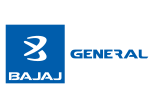Top SIP Investments Under ₹20,000 in India
As its name suggests, an S.I.P. (Systematic Investment Plan) is just one of the many ways a person may invest money. It is called systematic because it involves investing a fixed amount of money at fixed intervals in an investment scheme. The idea is to invest small amounts of money over time instead of a huge lump sum amount. This achieves many objectives - it results in a higher return with a lower risk of losing money due to your investments underperforming, at the same time, it is an investment strategy that is more affordable as it does not take a large chunk of money out from your pocket.
Table of Contents
What Are The Avenues An S.I.P. May Be Used To Invest In?
Although S.I.P. is just a method of investing and may be used to invest in just a stock or two, debt securities, derivatives, or a portfolio made up of a combination of all these, it has been used to invest in Mutual Funds so much that it has become synonymous with it.
That being said, S.I.P.s are often coupled with insurance schemes. From the pool created from the premiums the policyholder pays, some money is invested in a Systematic Investment Plan and the remaining is used to provide the cover promised by the investment scheme. As returns are earned on the Systematic Investment, they are used for both, to grow the pool of money and to pay out as dividends to the policyholder.
What Are The Different Types of S.I.P.?
For a broader understanding, Systematic Investment Plans may be divided into three types - Top-Up S.I.Ps, Flexible S.I.P.s and Perpetual S.I.P.s.
- Top-Up S.I.P.s allow the investors to increase the amount of systematic investments they make at a later time. This way, investors can start their investment with a smaller amount of money, and once they are confident in the investments, they can invest more money in the same avenues.
- Flexible S.I.P.s allow the investors to change the amount of money they invest periodically freely. This allows the investor to adjust their periodic investment as per their personal cash flows and requirements.
- Perpetual S.I.P.s allow the investors to enjoy the benefits and returns from these investment schemes without an end date to the mandate.
Top S.I.P. Investment Schemes in India

Now that you have a basic understanding of what S.I.P.s are, let us get into what are currently the best investment schemes the Indian Market has to offer. Given below are 5 investment schemes and their detailed comparison.
1. HDFC Mid-Cap Opportunities Fund
HDFC Mid-Cap Opportunities Fund is an open-ended equity scheme that mandates itself to invest at least 65% of its pool in mid-cap stocks. With a minimum S.I.P. of just ₹100, it is a scheme that almost anyone can partake in without much toll on their pockets.
Since it is an equity investment scheme, it characteristically bears high returns at high risks. It boasts of a 52.60% return in 1 year, 31.38% in 3 years and 31.64% in 5 years. There is no entry load but an Exit Load of 1.00% is payable if Units are redeemed/switched out within 1 year from the date of allotment. However, No Exit Load is payable if Units are redeemed/switched out after 1 year from the date of allotment.
2. Parag Parikh Flexi Cap Fund
Parag Parikh Flexi Cap Fund is a diversified equity scheme that mandates itself to invest an average of 65% of its corpus in listed Indian Stocks. This is done to “benefit from the favourable Capital Gains tax treatment accorded to such schemes” as per the company. The minimum S.I.P. for this scheme is just ₹1,000 for a new purchase, additional purchase and monthly S.I.P. while if you opt for quarterly S.I.P. it proportionately goes up to ₹3,000.
Being an equity scheme, it ranks high on the “Riskometer” but also provides high returns on investments. It has generated a return of 39.08% in 1 year, 18.80% in 3 years and 26.35% in 5 years. There is no entry load and there is no exit load if 10% or less of the units are redeemed from the date of allotment. Above that, a 2% exit load is charged if the investment is redeemed on or before 365 days from the date of allotment of units and 1% if the investment is redeemed after 365 days but on or before 730 days from the date of allotment of units. Further, No Exit Load will be charged if the investment is redeemed after 730 days from the date of allotment of units.
3. ICICI Prudential Equity & Debt Fund
ICICI Prudential Equity & Debt Fund is an open-ended hybrid scheme but it invests in equity securities more than it does in debt securities. As more of its investments are in equities, the scheme is a high-risk scheme, but it also gives considerable returns. It has declared a 36.96% return for a 1-year period, 24.5% for 3 years and 23.3% over 5 years. There is no entry load and the minimum S.I.P. is just ₹100 Daily, Weekly, Fortnightly & Monthly while it is ₹5,000 quarterly. The exit load is none for up to 30% of units, 1% for more than 30% of the units within a year from the date of allotment and no exit load after 1 year from the date of allotment.
4. ICICI Prudential Money Market Fund
ICICI Prudential Money Market Fund is an open-ended debt scheme investing in money-market instruments. The objective of investing in money market instruments is to provide considerable gains at a risk which is much lower than the aforementioned equity funds. The scheme has earned a 7.5% growth in a period of 1 year, 6.06% in 3 years and 5.89% in 5 years but the risk it carries is very low as well. The minimum S.I.P. is just ₹100 Daily, Weekly, Fortnightly & Monthly while it is ₹5,000 quarterly and there is neither any entry load nor exit load.
5. ICICI Prudential Short-Term Fund
ICICI Prudential Short-Term Fund is an open-ended short-term debt fund investing in debt securities and bonds in such a way that the period to the maturity of the cash flows from these securities falls between 1 year to 3 years. The scheme can be described as a moderate return at moderate risk scheme and has announced a 7.6% return on funds invested for 1 year and a 6.15% return for a period of 3 years. Just like the previous scheme, the minimum S.I.P. for this one is just ₹100 Daily, Weekly, Fortnightly & Monthly while it is ₹5,000 quarterly and there is neither any entry load nor exit load.
Comparison Between The Schemes
|
Name of Scheme |
Minimum S.I.P. |
Risk |
1-Year Return |
3-Year Return |
5-year Return |
Exit Load |
|
HDFC Mid-Cap Opportunities Fund |
₹100 |
High Risk |
52.60% |
31.38% |
31.64% |
1.00% if redeemed within 1 year from the date of allotment. None if redeemed after 1 year. |
|
Parag Parikh Flexi Cap Fund |
₹1,000 for new purchase, additional purchase and monthly S.I.P. ₹3,000 quarterly S.I.P. |
High Risk |
39.08% |
18.80% |
26.35% |
None if 10% or less of the units are redeemed from the date of allotment. 2% if more than 10% are redeemed on or before 365 days from the date of allotment of units. 1% if more than 10% redeemed after 365 days but on or before 730 days. None after that. |
|
ICICI Prudential Equity & Debt Fund |
₹100 Daily, Weekly, Fortnightly & Monthly. ₹5,000 quarterly |
High Risk |
36.96% |
24.5% |
23.3% |
None for up to 30% of units, 1% for more than 30% of the units within a year from the date of allotment and no exit load after 1 year from the date of allotment. |
|
ICICI Prudential Money Market Fund |
₹100 Daily, Weekly, Fortnightly & Monthly. ₹5,000 quarterly |
Low Risk |
7.5% |
6.06% |
5.89% |
None |
|
ICICI Prudential Short-Term Fund |
₹100 Daily, Weekly, Fortnightly & Monthly. ₹5,000 quarterly |
Moderate Risk |
7.6% |
6.15% |
N/A |
None |
How To Select The Best S.I.P. When Investing in 2024
“What is the right investment scheme for me to invest in?” is a question that requires a lot of factors to be taken into account. There is no “One Size Fits All” when it comes to investment schemes. Everyone has different goals and investment horizons. There are different appetites for risk and different goals for returns.
As a general rule of the Capital Market, keep in mind that the more you invest, the more you earn if your investments perform well. At the same time, the higher than returns offered on an investment, the higher is going to be the risk of losing your money. It all boils down to how much risk you are ready to face. So, if you are someone who likes to play it safe, it is better to invest in schemes that invest predominantly in debt and bond securities as they are fixed-income securities. On the other hand, if you are not satisfied with the returns fixed-income securities offer, you could always go for equity schemes. Similarly, if you have time to put your money in a scheme, forget about it and enjoy the eventual returns, you could opt for a scheme with a longer investment horizon. But, if you want your investment to reap returns in a specific time frame in the near future, Short-Term Funds are there too. So, it is you who can decide what investment scheme is the best for you.
Conclusion
After all the things we have mentioned the main takeaway for you as an investor is that only you can decide what the best investment avenue for you is. And to accommodate people with different goals in the best way we can, we have tried to compile a comprehensive list of the top 5 Systematic Investment Plans Under ₹20,000 in India that has all types of funds, be it short-term or long-term, equity-oriented, debt-oriented or hybrids, high-risk and high returns or low-risk and low returns, just so you can find the scheme that suits you, your goals and appetites the most.
In the end, of course, if you ever need any help choosing what’s the right scheme for you, we at InsuranceDekho are just one call away.





























